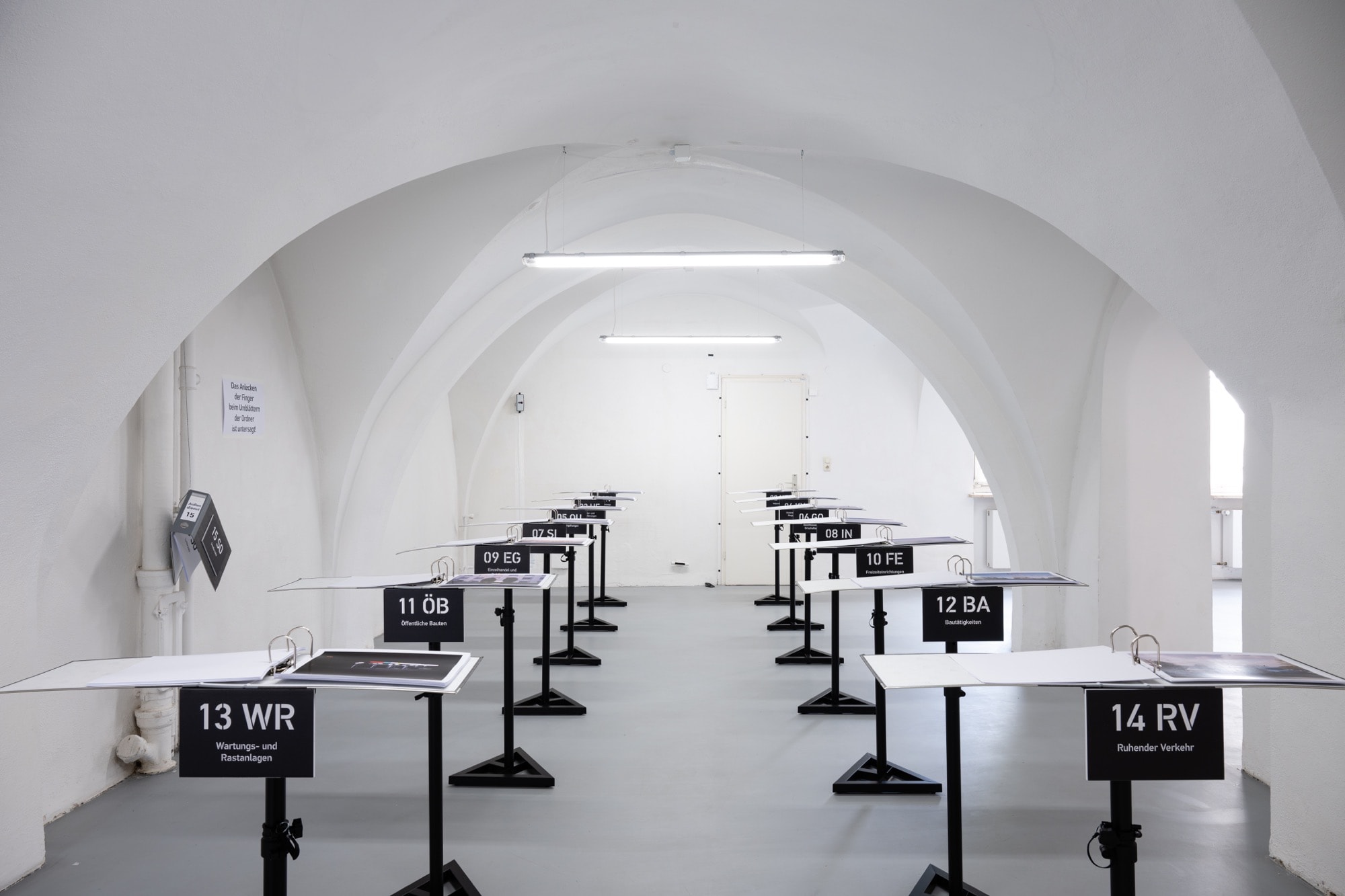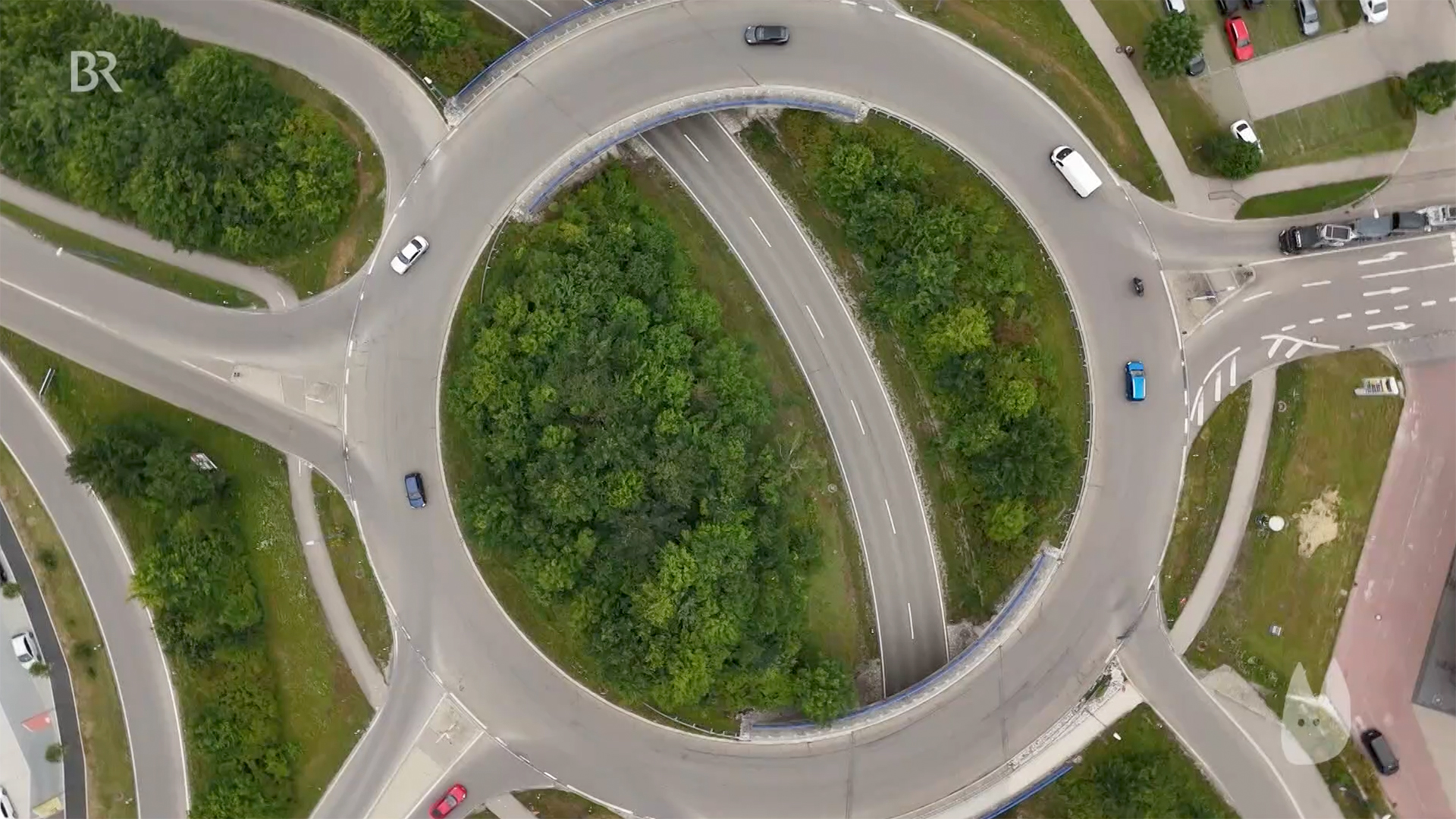Außendienst
Road Photography von J. Scriba
"Außendienst" translates to "field service" though some of the meaning of this very German word seems to be lost.
Due to an unlikely sequence of events I found myself accepting a job opportunity, taking a short break (or so I thought) from photography.
However, the short-term rescue mission for a pipe organ company turned into a 5-year interim management gig.
For the first two years I suffered from the notion of not finding any time to stop on one of my numerous drives to take a picture.
Then I realised that sitting in a car does not prevent me from being an artist at all. On the contrary, it would provide a host of new options.
My car became a camera.
I pledged myself to the dogmas of Road Photography (see below).
By now, my archive has passed the mark of 70,000 pictures.
Although all attempts to categorise the world are bound to fail by design, sorting pictures by 15 tags helps keeping the project somewhat manageable.
Due to an unlikely sequence of events I found myself accepting a job opportunity, taking a short break (or so I thought) from photography.
However, the short-term rescue mission for a pipe organ company turned into a 5-year interim management gig.
For the first two years I suffered from the notion of not finding any time to stop on one of my numerous drives to take a picture.
Then I realised that sitting in a car does not prevent me from being an artist at all. On the contrary, it would provide a host of new options.
My car became a camera.
I pledged myself to the dogmas of Road Photography (see below).
By now, my archive has passed the mark of 70,000 pictures.
Although all attempts to categorise the world are bound to fail by design, sorting pictures by 15 tags helps keeping the project somewhat manageable.
By design, the setup should result in utmost authenticity. The optical sensor affixed to my car duly records what's outside.
As a photographer I'm reduced to being a camera operator.
Yet, the pictures show a very subjective perception of reality.
Normally, our brains slip into some kind of auto pilot mode while driving a car.
The complex structures of street signs, architecture of our surroundings and lighting of the landscape are mostly suppressed by neural filters.
(Which is a good thing with respect to traffic safety.)
When I succeed in disabling those filters, I suddenly find myself confronted with a rather surreal scenery which begs to be made visible.
As a photographer I'm reduced to being a camera operator.
Yet, the pictures show a very subjective perception of reality.
Normally, our brains slip into some kind of auto pilot mode while driving a car.
The complex structures of street signs, architecture of our surroundings and lighting of the landscape are mostly suppressed by neural filters.
(Which is a good thing with respect to traffic safety.)
When I succeed in disabling those filters, I suddenly find myself confronted with a rather surreal scenery which begs to be made visible.
When the pandemic hit, this project took on a new aspect.
My car became a climate-controlled research vessel.
Hermetically sealed, I roamed the danger zones.
Live and landscape out there seemed even more unreal than before.
Back at my computer, the pictures parade across my screen like signals from a deep sea robot.
My car became a climate-controlled research vessel.
Hermetically sealed, I roamed the danger zones.
Live and landscape out there seemed even more unreal than before.
Back at my computer, the pictures parade across my screen like signals from a deep sea robot.
- The camera weighs 2 tons.
- It is part of the picture.
- The windscreen is the viewfinder.
- Only the steering wheel determines the perspective.
- The cropping isn't changed after the picture is taken.
- No pixel is replaced after the picture is taken.
- No part of the image is manipulated retrospectively.
Durch die Verkettung merkwürdiger Umstände parkte ich (wie ich dachte) vorübergehend die Fotografie und ging einer anderen Arbeit nach.
Aus dem kurzfristigen Rettungseinsatz bei einer Orgelbaufirma wurden fünf Jahre Interimsmanagement.
Die ersten zwei Jahre litt ich darunter, dass ich keine Zeit zum Fotografieren hatte. Dann wurde mir klar, dass das viele Autofahren mich keineswegs an der künstlerischen Arbeit hindert, sondern ganz im Gegenteil neue Möglichkeiten eröffnet.
Mein Auto wurde zur Kamera.
Ich verpflichtete mich den Dogmen der Road Photography.
Inzwischen hat das Bildarchiv die Marke von 70.000 Aufnahmen überschritten.
Auch wenn in jeder Bibliothek der Versuch einer stringenten Kategorisierung prinzipiell zum Scheitern verurteilt ist, helfen 15 Rubriken, den Überblick über das Konzept zu behalten.
Aus dem kurzfristigen Rettungseinsatz bei einer Orgelbaufirma wurden fünf Jahre Interimsmanagement.
Die ersten zwei Jahre litt ich darunter, dass ich keine Zeit zum Fotografieren hatte. Dann wurde mir klar, dass das viele Autofahren mich keineswegs an der künstlerischen Arbeit hindert, sondern ganz im Gegenteil neue Möglichkeiten eröffnet.
Mein Auto wurde zur Kamera.
Ich verpflichtete mich den Dogmen der Road Photography.
Inzwischen hat das Bildarchiv die Marke von 70.000 Aufnahmen überschritten.
Auch wenn in jeder Bibliothek der Versuch einer stringenten Kategorisierung prinzipiell zum Scheitern verurteilt ist, helfen 15 Rubriken, den Überblick über das Konzept zu behalten.
Eigentlich bürgt die technische Anordnung für größtmögliche Authentizität. Der an meinem Wagen befestigte Bildsensor hält fest, was da draußen ist.
Als Fotograf bin ich hier nur Camera Operator.
Und doch zeigen die Bilder meine höchst subjektive Wahrnehmungen.
Normalerweise geht das Gehirn beim Autofahren in eine Art Automatikmodus.
Die komplexen Leitsysteme des Straßenverkehrs, Architektur der Umgebung, Licht in der Landschaft werden ausgefiltert.
(Und das ist unter dem Aspekt der Verkehrssicherheit meist auch gut so.)
Wenn es gelingt, die Filter auszuschalten, finde ich mich plötzlich in surrealen Szenerien wieder, deren Existenz sichtbar gemacht werden will.
Als Fotograf bin ich hier nur Camera Operator.
Und doch zeigen die Bilder meine höchst subjektive Wahrnehmungen.
Normalerweise geht das Gehirn beim Autofahren in eine Art Automatikmodus.
Die komplexen Leitsysteme des Straßenverkehrs, Architektur der Umgebung, Licht in der Landschaft werden ausgefiltert.
(Und das ist unter dem Aspekt der Verkehrssicherheit meist auch gut so.)
Wenn es gelingt, die Filter auszuschalten, finde ich mich plötzlich in surrealen Szenerien wieder, deren Existenz sichtbar gemacht werden will.
Mit Beginn der Pandemie bekam auch dieses Projekt eine neue Dimension.
Mein Auto verwandelte sich in eine gut klimatisierte Forschungskapsel.
Rundum versiegelt durchstreife ich Risikozonen,
Landschaft und Leben da draußen wirken noch unwirklicher als zuvor.
Zurück am Monitor ziehen die Bilder vorbei wie die Signale eines Tauchroboters.
Mein Auto verwandelte sich in eine gut klimatisierte Forschungskapsel.
Rundum versiegelt durchstreife ich Risikozonen,
Landschaft und Leben da draußen wirken noch unwirklicher als zuvor.
Zurück am Monitor ziehen die Bilder vorbei wie die Signale eines Tauchroboters.
- Die Kamera wiegt 2 Tonnen.
- Sie ist Teil des Bildes.
- Die Frontscheibe ist der Sucher.
- Nur das Lenkrad bestimmt die Perspektive.
- Der Bildausschnitt wird nachträglich nicht verändert.
- Kein Pixel wird nachträglich verschoben.
- Keine Partie des Bildes wird nachträglich manipuliert.

Hauptverkehrswege (trunk roads)
Nebenstrecken (ancillary roads)
Unter- und Überführungen (underpasses and overpasses)
Kreisverkehre und Wegquerungen (roundabouts and crossings)
Ortsumgehungen (bypass roads)
Geschlossene Ortschaften (urban areas)
Siedlungen (settlements)
Industriegebiete (industrial zones)
Einzelhandel und Geldinstitute (retail outlets and financial institutions)
Freizeiteinrichtungen (recreational facilities)
Öffentliche Bauten (public buildings)
Bautätigkeit (construction activity)
Wartungs- und Rastanlagen (maintenance and rest facilities)
Ruhender Verkehr (stationary traffic)
Sonderziele (special destinations)
